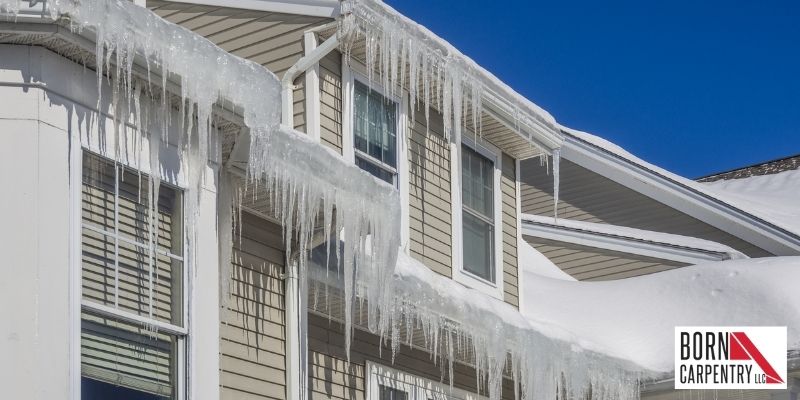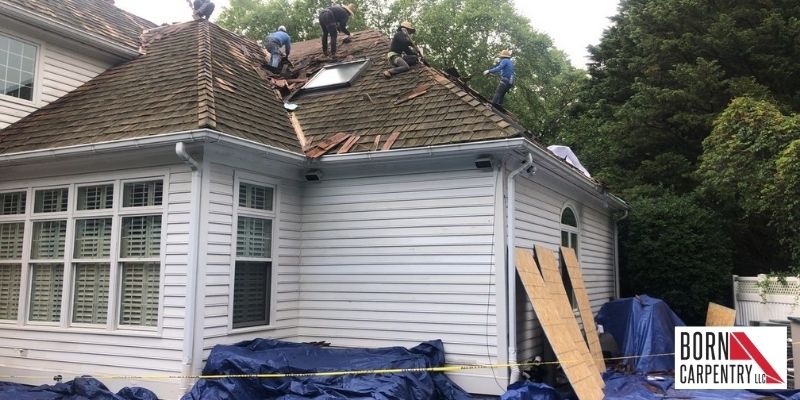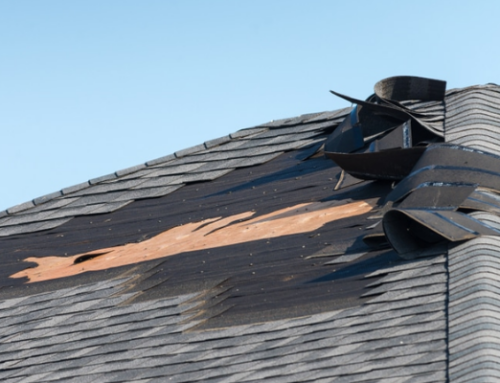Homeowners may face issues that need urgent attention after severe weather. Immediately after a storm strike, it is important that you quickly access your home’s roof and repair any damage. The roof of your home serves as a protective shield, and a little damage to it can adversely affect your home. To ensure that the problem does not get worse, seek help from a professional so that necessary repairs can be done.
What Are Some Types of Storm Damage?
Understanding the various types of storm damage will assist you in quickly getting problems repaired.
Below are some types of storm damage that commonly affect homes:
High winds
Strong winds associated with tornadoes and thunderstorms can tear or remove the shingles away from your roof. This could expose your roof deck or underlayment to destructive elements. Flashing and gutters can also be put out of place by windy gusts. This could lead to water damage to the walls and ceilings, chimney, and the foundation of your home over time.
Hail
Hail often comes with storms. Though hail can happen for a very short time, the hailstones loosen shingle granules and leave dents on shingles. This is a big problem because the shingles that are supposed to protect your roof against sun and rain damage will not be functional anymore.
Debris
Depending on the severity of a storm, falling debris can end up on top of your home’s roof. The most common types of debris after a storm are tree branches. If a tree branch or any other debris is large, it can cause a dent in your shingle. The area of your roof it affects will be more vulnerable to moisture encroachment.
Snow and ice

Your roof can also be damaged by snowfalls. If the snowfall is heavy, it can lead to leaks and breaks. It can also build up in and around the flashing and gutters, causing ice dams. If this happens, moisture will not be able to drain properly. Water spots after a snowstorm could indicate that the roofing ventilation is not properly installed.
Standing water
Problems can develop after a rainstorm if your home’s roof does not have a proper drainage system. Rainwater can back up underneath your shingles if your gutters are clogged. If this happens, water can easily get through to the roof deck or underlayment and cause damage.
What to Do to Your Roof After Storm Damage

The first line of defense in your home against external elements is the roof. And you cannot always predict when it will suffer damage as a result of stormy weather. However, you should repair it if you suspect any damage.
What should you do after a storm?
Assess the damage
Assessing the extent of damage after severe weather is the first step to making repairs. Use a pair of binoculars to look at your roof after a storm to help identify the damaged area easily. Take note of how severe the damage is. Also, check to see if some shingles are missing. There are instances where only a few shingles will be missing, so you need to look closely.
Record the details of all materials that are exposed. Check for signs that indicate exposed tar paper and plywood. You can also take a look at the ends of missing shingles. Note the approximate shade and color of the material.
Make temporary fixes
You may not be able to carry out complete repair of your roof immediately after a storm. It is therefore important that you make temporary fixes to prevent damage to your property. Leaking water can damage interior items if the roof is damaged in an area right above your living space.
To prevent further damage to items inside your home, place a garbage can or bucket under the leaks. You can then proceed with smaller repairs until you contact your insurance company or a professional to get big leaks properly fixed.
Get in touch with your insurance company
You must get in touch with your insurance company after noticing damage to your roof. See if repairs can be covered by your homeowner’s insurance.
Contact a professional for repair
Rather than do-it-yourself and risk falling off the roof, call a professional like the folks at Born Carpentry to make needed repairs.
Conclusion
Do not wait for damage to become worse before you fix it. Repairing a damaged roof quickly (and professionally) will save you a lot of money and stress.






